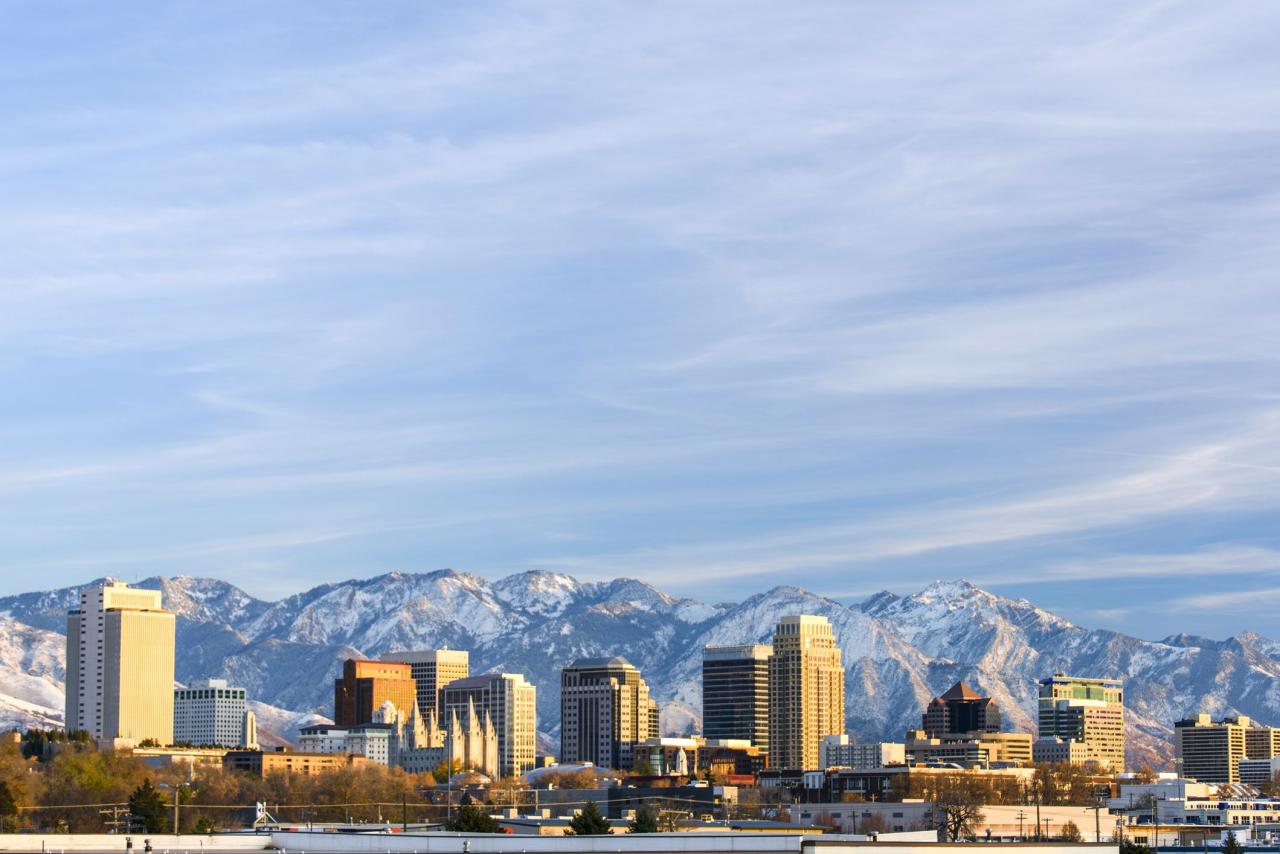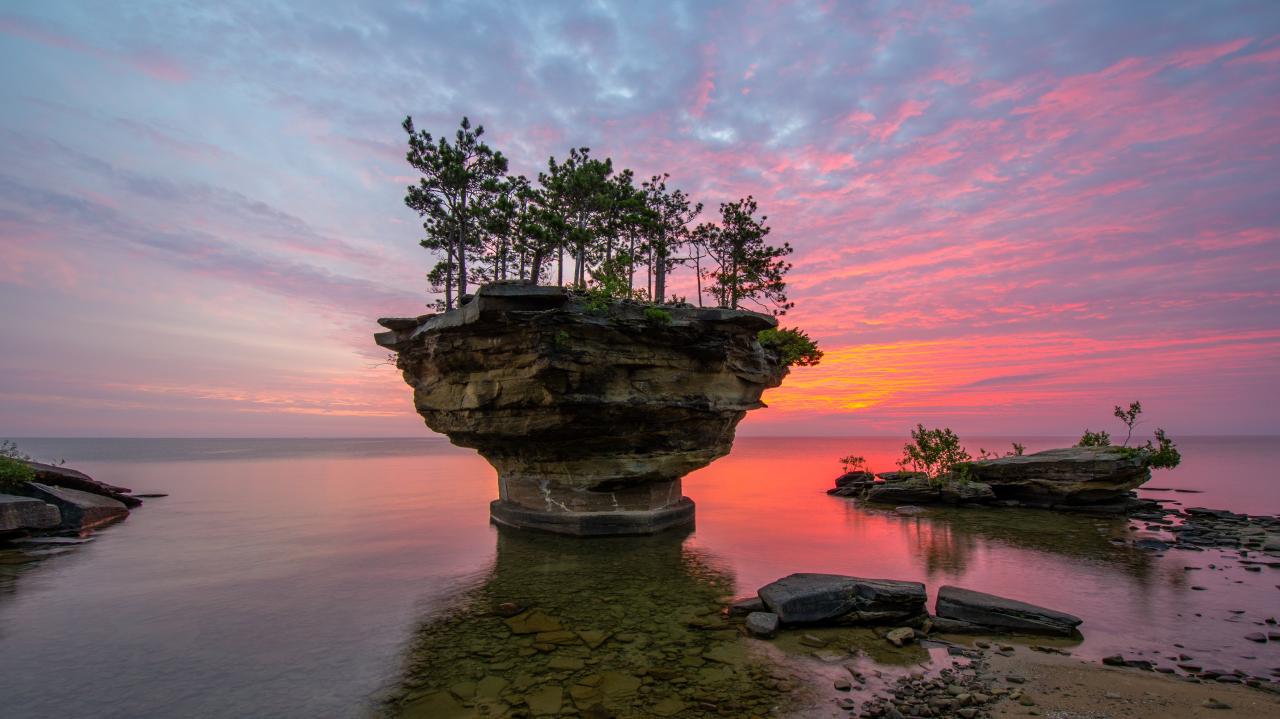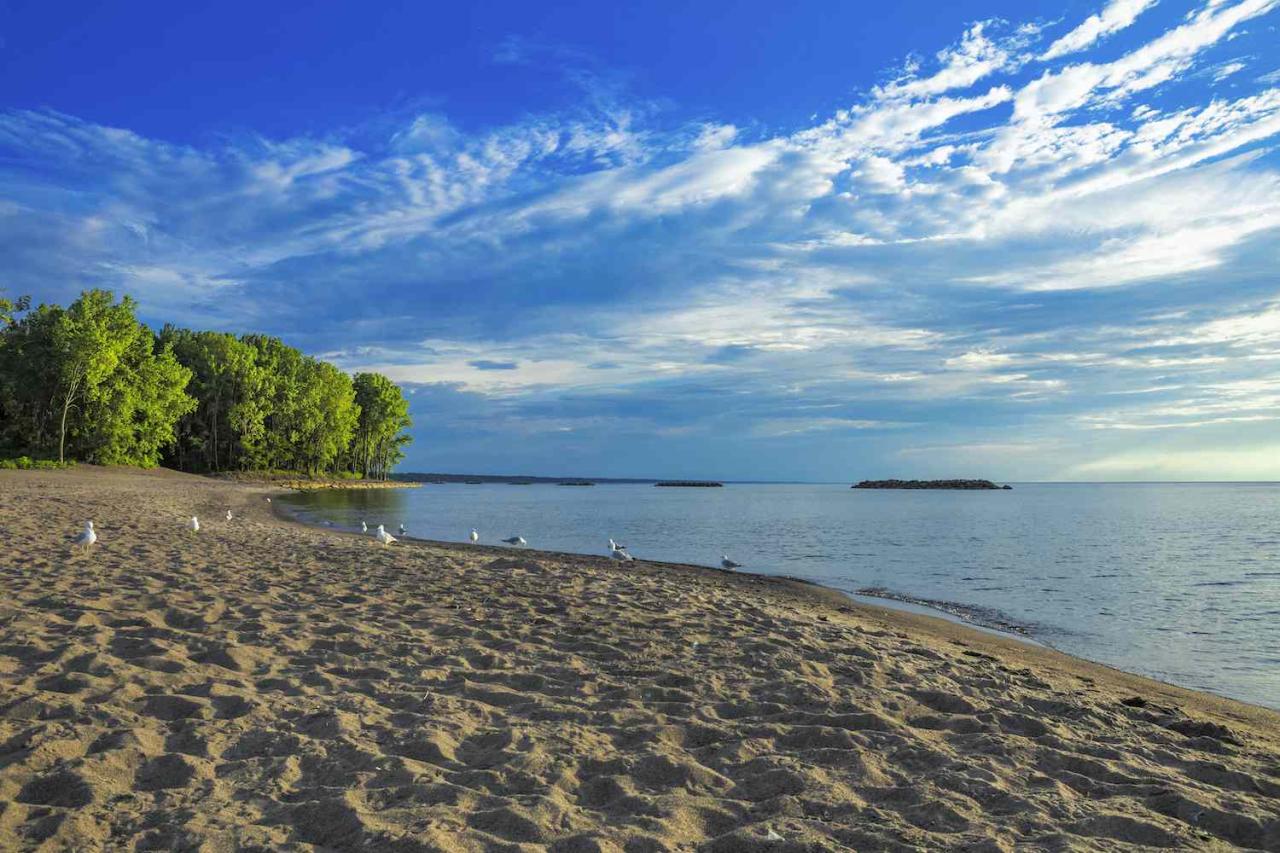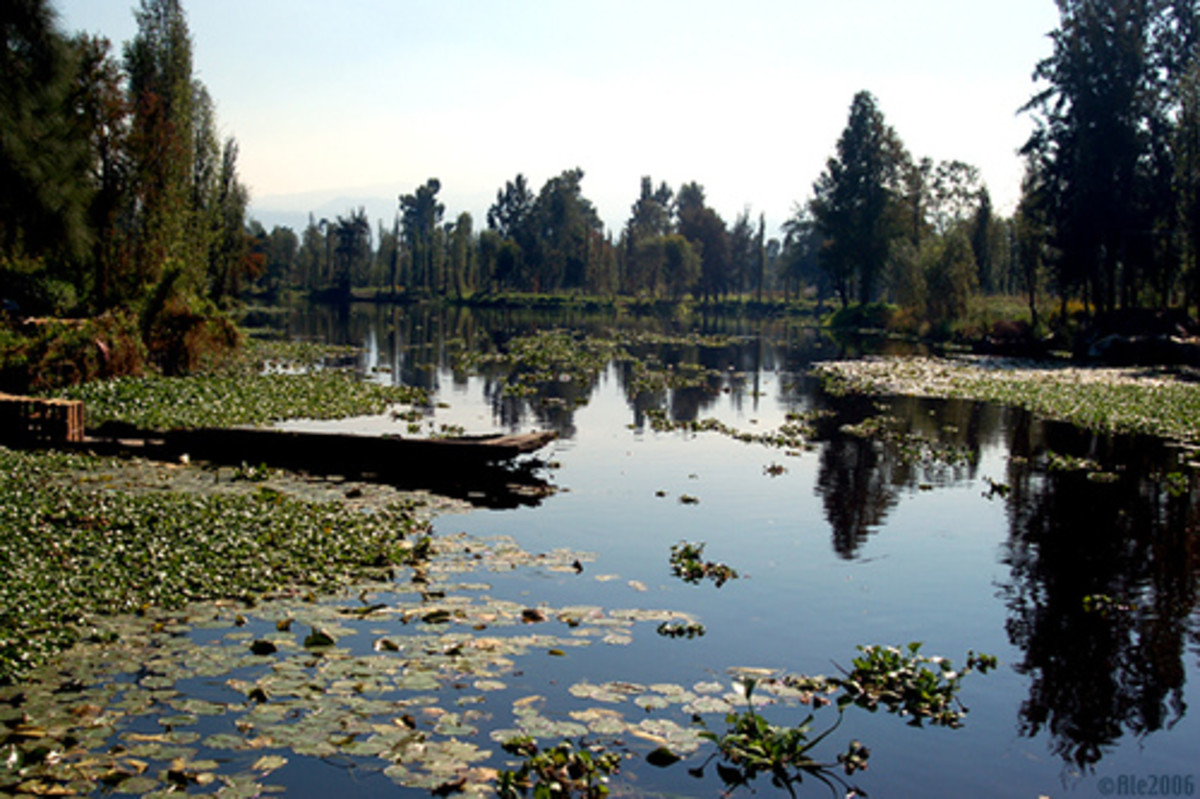Lake Mead, a vast reservoir formed by the majestic Hoover Dam, stands as a testament to human ingenuity and the power of nature. This artificial lake, nestled in the heart of the American Southwest, has been a vital source of water, a hub for recreation, and a symbol of the region’s history and culture for generations.
From its creation in the 1930s, Lake Mead has played a pivotal role in the development of the Southwest, providing water for millions of people and fueling economic growth. The lake’s stunning scenery, with its towering cliffs, turquoise waters, and diverse wildlife, has also attracted visitors from around the world, making it a popular destination for boating, fishing, camping, and other outdoor activities.
Lake Mead’s History and Formation
Lake Mead, a vast reservoir nestled on the Colorado River, stands as a testament to human ingenuity and the relentless force of nature. Its creation is a story intertwined with the geological history of the Southwest and the ambitious engineering feats of the 20th century.
Geological Formation
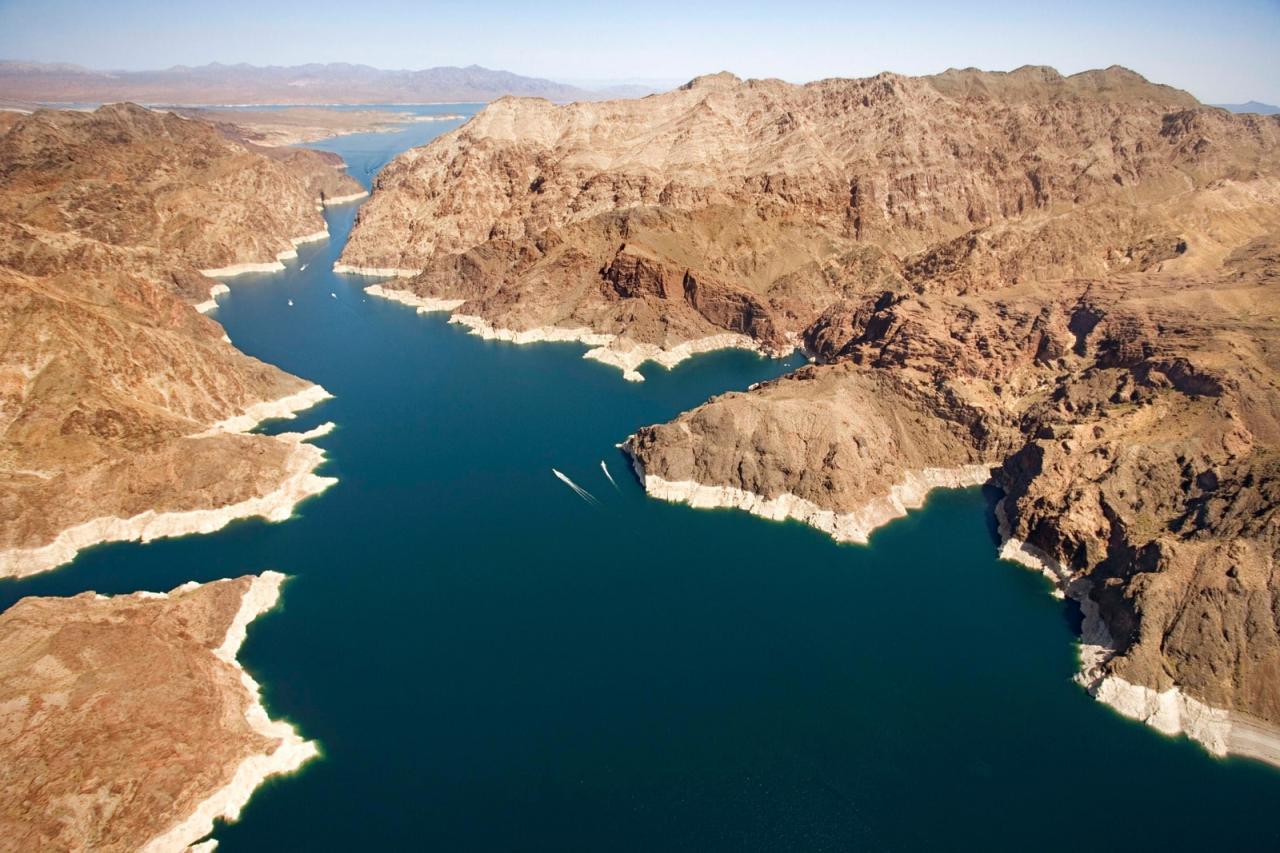
The foundation for Lake Mead was laid millions of years ago through a series of geological events. The Colorado River, carving its path through the arid landscape, gradually eroded the surrounding rock, forming the Black Canyon. This canyon, with its steep walls and narrow passage, provided the ideal setting for the construction of a dam that would later give birth to Lake Mead.
Hoover Dam and the Birth of Lake Mead
The construction of Hoover Dam in the 1930s marked a turning point in the history of Lake Mead. This massive concrete structure, built across the Black Canyon, transformed the Colorado River into a colossal reservoir. The dam’s construction, a testament to human engineering prowess, involved the displacement of millions of cubic yards of earth and rock, ultimately creating the largest man-made lake in the United States at the time.
The dam’s completion not only harnessed the power of the Colorado River, generating electricity for millions, but also created a vast expanse of water that would become a vital resource for the Southwest.
Historical Significance
Lake Mead’s creation had a profound impact on the Southwest, transforming the region’s landscape and its water resources. The lake became a lifeline for a rapidly growing population, providing irrigation for farms, drinking water for cities, and hydroelectric power for industries.
Its significance extended beyond the immediate region, playing a crucial role in the development of the entire Southwest, a region known for its arid climate and limited water resources.
Lake Mead’s Ecosystem and Biodiversity
Lake Mead’s vast expanse of water and surrounding desert landscape provide a unique habitat for a diverse array of plant and animal life. The lake’s ecosystem is a delicate balance, constantly adapting to the changing conditions of the Southwest.
Plant and Animal Life
The shores of Lake Mead are adorned with a variety of desert vegetation, including creosote bush, mesquite, and cacti. The lake itself teems with aquatic life, including fish species like bass, catfish, and crappie. Birdlife is abundant, with species like bald eagles, osprey, and various migratory birds finding refuge along the lake’s shores.
Ecological Challenges
The lake’s ecosystem faces a number of challenges, including invasive species, water quality issues, and the impact of climate change. The introduction of non-native species, such as the quagga mussel, has disrupted the delicate balance of the lake’s ecosystem. Water quality issues, primarily related to agricultural runoff and urban pollution, pose a threat to the health of the lake and its inhabitants.
Climate change, with its impact on water availability and temperature, further exacerbates these challenges.
Conservation Efforts
Recognizing the importance of protecting Lake Mead’s ecosystem, conservation efforts are underway to address these challenges. Agencies and organizations are working to control invasive species, improve water quality, and mitigate the effects of climate change. These efforts involve a combination of scientific research, public education, and collaborative partnerships.
Lake Mead’s Recreation and Tourism
Lake Mead is a popular destination for outdoor recreation and tourism, offering a wide range of activities for visitors to enjoy. Its scenic beauty, coupled with its recreational opportunities, attracts millions of visitors each year.
Recreational Activities
Lake Mead offers a plethora of recreational activities, including boating, fishing, swimming, camping, and hiking. Visitors can enjoy scenic boat tours, cast a line for bass or catfish, or simply relax on the sandy beaches. The lake’s surrounding desert landscape provides opportunities for hiking and exploring the natural beauty of the region.
Economic Impact
Tourism plays a significant role in the economies of the communities surrounding Lake Mead. The lake attracts visitors from across the country and beyond, generating revenue for hotels, restaurants, marinas, and other businesses. The economic impact of tourism extends beyond the immediate area, supporting jobs and contributing to the overall economic vitality of the region.
Key Attractions
Lake Mead boasts a number of key attractions, including Hoover Dam, the Lake Mead National Recreation Area, and various historical sites. Visitors can tour Hoover Dam, marveling at its engineering marvel, or explore the scenic vistas of the Lake Mead National Recreation Area.
The region is also home to archaeological sites and historical artifacts that offer glimpses into the past.
Lake Mead’s Water Levels and Drought
Lake Mead’s water levels have fluctuated significantly over time, reflecting the impact of drought, climate change, and water management practices. The lake’s shrinking water levels have raised concerns about the future of this vital resource.
Fluctuations in Water Levels
Lake Mead’s water levels have experienced dramatic fluctuations over the past few decades, primarily driven by periods of drought and increased water demand. The lake’s water levels have reached record lows in recent years, raising concerns about the sustainability of this vital resource.
Impact of Drought
Drought has had a profound impact on Lake Mead, leading to declining water levels and impacting the lake’s ecosystem and the surrounding communities. The drought has also strained water resources, leading to restrictions on water use and impacting agricultural production.
Strategies to Address Water Shortage, Lake mead
To address the water shortage, various strategies are being implemented, including water conservation measures, water recycling initiatives, and efforts to improve water management practices. These strategies aim to reduce water demand, improve water efficiency, and ensure the long-term sustainability of this vital resource.
Lake Mead’s Cultural and Historical Significance
Lake Mead and its surrounding areas hold a rich cultural and historical significance, interwoven with the stories, legends, and traditions of Native American tribes and the early settlers of the Southwest.
Stories and Legends
The region surrounding Lake Mead is steeped in stories and legends, passed down through generations. Native American tribes have long inhabited this area, leaving behind a legacy of cultural traditions, oral histories, and spiritual beliefs. These stories, often rooted in the land’s natural features and the events that unfolded over centuries, offer a glimpse into the rich cultural heritage of the region.
Archaeological Sites and Artifacts
The area surrounding Lake Mead is home to numerous archaeological sites and historical artifacts, providing evidence of human activity dating back thousands of years. These sites offer valuable insights into the lives and cultures of the people who once inhabited this region, shedding light on their ways of life, their interactions with the environment, and their adaptations to the challenges of the desert landscape.
Cultural Significance for Native American Tribes
Lake Mead and its surrounding areas hold significant cultural importance for Native American tribes, whose ancestral lands encompass this region. These tribes have deep spiritual connections to the land, its waters, and its natural features. The lake is a source of sustenance, a place of spiritual renewal, and a reminder of their enduring connection to the land.
Epilogue: Lake Mead
As we look towards the future, the challenges facing Lake Mead are significant. Climate change, increasing population, and the ongoing drought have all put pressure on the lake’s water levels. However, through innovative solutions, responsible water management, and a commitment to conservation, we can ensure that Lake Mead remains a vital resource for generations to come.
Its story serves as a reminder of the delicate balance between human needs and the environment, and the importance of preserving our natural treasures for future generations.


